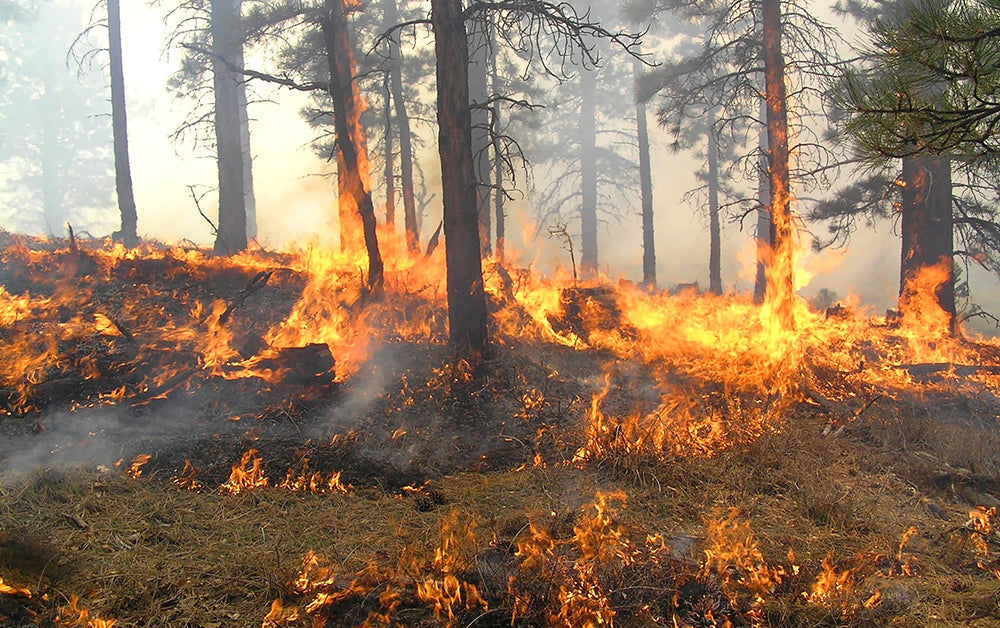Record-Breaking Wildfire Season Prompts Experts to Urge Smoke Detector Checks
In 2025, the United States is facing one of its most intense wildfire seasons on record. As of late September, over 51,549 wildfires have burned more than 4,488,364 acres across the nation. Compared to the 10-year average, the number of fires is above normal, although the total burned acreage remains somewhat lower than in past peak years. In California alone, over 521,623 acres have been scorched and more than 16,479 structures lost. Experts warn that persistently dry, hot weather and shifting wind patterns are lengthening fire seasons and intensifying smoke burden in communities far from the flames.


Problem Severity: Smoke Is the Hidden Threat
While the flames often draw headlines, the real danger for many households lies in smoke and fine particles (PM₂.₅) drifting deep into homes and neighborhoods. A newly published study estimates that wildfire smoke currently contributes to 41,000 premature deaths annually in the U.S., surpassing some deaths from heat or traffic incidents. Under high global warming scenarios, that number could rise to 70,000+ per year by 2050. The smoke burden is not uniform — communities downwind, even hundreds of miles away, may endure hazardous air for days. Inside homes, smoke can provoke asthma attacks, respiratory distress, or silent hypoxia — all especially dangerous for children, older adults, and those with chronic lung or heart conditions. In short, in this era of amplified wildfire risk, relying solely on traditional fire response is no longer enough. Proactive interior air safety is vital.

Product Solution: Smoke Discovery, Early Alert, and Peace of Mind
Given this landscape, a properly installed smoke detector becomes not just a fire alarm, but a first line of defense against smoke infiltration. Siterwell offers a line of smoke detectors that combine photoelectric sensing (for slow, smoldering smoke) with long-life power and standards compliance. One example is Siterwell GS525A, which includes a 10-year battery (no battery replacements) and is UL217-9th/ETL certified for accuracy in detecting smoldering fires. Because many smoke detectors only trigger when flames or thick smoke appear, pairing that capability with early detection of particulate levels (especially in wildfire season) gives households more time to act: ventilate, close HVAC intakes, don masks, or temporarily shift to“safe air”rooms. Siterwell GS525A is designed for easy installation (magnetic mounting, ceiling or wall) and weekly test/mute buttons to simplify upkeep.

Certification, Real-World Testing & Credibility
Siterwell's detectors conform to recognized industry standards, including UL/ETL certification for smoke detection quality. In independent testing environments, photoelectric-type sensors have demonstrated better resilience against false alarms from cooking smoke, while still reliably detecting slow, smoky fires — a balance crucial when indoor air is already stressed by wildfire smoke. Beyond lab tests, field users report that Siterwell devices minimize nuisance alerts as much as possible (for example, during toast or light smoke) while maintaining stable baseline sensitivity. These factors matter, because a smoke alarm that goes off too often is often disabled — defeating its purpose.

Multi-Scenario Coverage: From Wildfire Smoke to Home Fires
Taking Siterwell GS525A for example, this kind of smoke detection is relevant in many everyday scenarios:
2. Nighttime smoldering fires (e.g. electrical faults in a wall): Because photoelectric detectors respond earlier to dense, low-flame smoke, they can catch smoldering issues before full flame develops.
3. Kitchen incidents: Detectors with smart alarm muting reduce false alerts during normal cooking, reducing alarm fatigue.
4. Older homes or ones with HVAC systems: When HVAC or ventilation fans recirculate outdoor smoke, alarms located at key airflow junctures give early warning.
Call to Action: Check, Replace, Protect
2. Consider upgrading to detectors with long-life or replaceable batteries and advanced sensors (such as those Siterwell offers).
3. If you live in wildfire-exposed areas, place detectors near HVAC intakes, bedrooms, and upstairs hallways.
4. Explore hardwired, networked or wireless alarm systems to cover your full home footprint.
5. Stay informed on local air quality via apps or city notices, and act early (close windows, run clean air filters) when smoke is detected. In this age of intensifying wildfire seasons, a smoke detector is more than a device—it is a daily sentinel for your family's safety.



